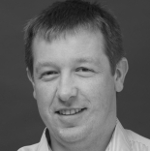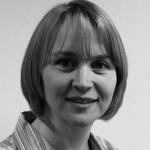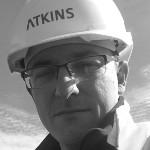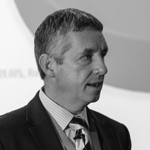Programme
-
Registration and Networking
-
Opening remarks from the Chairman
Michael RivettDirector, GroundH2O plus Ltd & Dept of Civil & Environmental Engineering, University of Strathclyde - Groundwater Risk Assessment
-
Practically applying recent guidance to develop pragmatic risk assessment targets for petroleum hydrocarbons in groundwater
- Pinpointing the key objectives and points of advice in the recent CL:AIRE guidance for assessing petrol hydrocarbons
- To what extent has this changed approaches to groundwater risk assessment?
- Practical examples of using new guidance to develop groundwater risk assessment and remediation targets
-
Innovative approaches to assess the site-specific risks to groundwater on a former gasworks
Former gasworks sites can contain a substantial legacy of recalcitrant hydrocarbon contamination in the form of tars, which present a significant risks to groundwater. To make informed decisions regarding the nature of the risk and extent of remediation required, a combination of geophysical and forensic chemical analytical techniques can be employed. These can enable visualisation of the spatial extent of contamination and degradation products in near real time, together with source appropriation of organic and inorganic contaminants within groundwater plumes, and their in-situ rates of degradation.
This presentation provides a scientific background to the application of the techniques and their limitations, together with case study examples of their use.
-
Questions and Answers
-
Morning Refreshments and Networking
-
Chemical interfaces in plumes and their influence on contaminant biodegradation potential of biofilms
- Exploring the concept of chemical interfaces in contaminant plumes and their role in biodegradation in groundwater
- Illustrating a lab-scale microcosm design to recreate field scale processes which control biofilm development in plumes
- Examining the resilience of microbial communities in biofilms from a phenol-contaminant aquifer to changes in their chemical environment
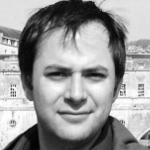 Juan F. Mujica
Groundwater Protection and Restoration Group (GPRG), Kroto Research Institute, University of Sheffield
Juan F. Mujica
Groundwater Protection and Restoration Group (GPRG), Kroto Research Institute, University of Sheffield -
Practically assessing the risks to human health of vapour intrusion from groundwater
- Exploring the latest understanding of the risks from vapour intrusion
- Reviewing the GAC developed by SOBRA for assessing the risks of vapour intrusion from groundwater alongside other industry guidance:
- detailing assumed modelling inputs and parameters
- outlining other criteria and contaminants to be considered
-
“The Nitrate Timebomb” - Assessing the risk of nitrate pollution in groundwater
- Exploring the challenges of “legacy nitrate”
- How much nitrate is stored in the unsaturated zone and where?
- Examining how the UK fits into the global picture
- Implications for risk assessment and management of nitrate pollution
-
Questions and Answers
-
Lunch and Networking
-
Practical solutions for assessing and managing contamination risks to groundwater from landfills
- Assessing the levels of risk to groundwater posed by landfill leachate:
- what is the life-span for specific contaminants?
- identifying any likely peaks and reductions in risk
- assessing the behaviour of the plume over time
- measuring the likely ingress of leachate onto sites adjacent to landfills
- Practical solutions for remediating leachate plumes
- Case study: Assessing and remediating a former landfill site for development
-
Water industry perspective on managing water quality
- Identifying the nitrate source using multiple techniques
- mass balance
- isotope fingerprinting
- age profiling
- Understanding the pathways through better geological mapping
- effect of faulting
- drift geology and impact of glaciation
- Working with land-users
- identifying possible land use changes
- talking to land users – what are they already doing?
- focus groups
- Where next?
-
Questions and Answers
- Groundwater Data and Modelling
-
Best practice to optimise results from SI and DQRA data and improve decision-making
- Advances in effective data collection and inputs to inform groundwater fate and transport models:
- determining the optimum amount and type of data required for more accurate risk assessment
- successfully interpreting large, complex data sets to extract timely, useful information
- evaluating the quality of sampling data obtained from different collection and monitoring tools
- Identifying key factors of influence on results and how best to manage them:
- sources of uncertainty and error
- parameters of greatest sensitivity
- Overall requirements for data collection, management and risk assessment to inform effective decision-making
- Practicalities of integrating groundwater flow and transport with other environmental models, e.g. water resources planning, surface-groundwater interaction, to consider the wider environment beyond the site boundaries and achieve better decision-making
- Advances in effective data collection and inputs to inform groundwater fate and transport models:
-
Questions and Answers
-
Afternoon Refreshments and Networking
- Groundwater Remediation
-
Effectively using Natural Source Zone Depletion (NSZD) technology for sustainable management of groundwater impacts at petroleum hydrocarbon sites
- Examining the UK regulatory context for NSZD as part of a monitored natural attenuation (MNA) solution to achieve remedial objectives
- Detailing the concept of NSZD as a monitored natural attenuation (MNA) solution for hydrocarbon light non aqueous phase liquids (LNAPL):
- Methods for evaluation of natural attenuation and source depletion rates
how the solution has developed - comparison of methods with example applications
- Methods for evaluation of natural attenuation and source depletion rates
- Exploring the benefits of NSZD assessment as basis for remedial technology selection or transition to NSZD in a sustainability framework
- Practical experiences of NSZD with applied R&D, guidance, field trials, and application at a former refinery site
-
Case Study: Meridian Water Zone 1 – An example of applying an innovative solution to eliminate perpetual groundwater liabilities
- An introduction to the Site Conceptual Model and the contamination challenge faced
- Exploring the technology used - the NET system - and the solution achieved
- Detailing the remediation results and obtaining regulatory sign-off

-
Application of Low Temperature In-Situ Heating to Enhance Light Non-Aqueous Phase Liquid Recovery
- Overview of available in-situ thermal technologies and their potential application to groundwater remediation
- Strategy Development and Remedial Approach: coupling of thermal conductive heating to enhance LNAPL recovery via skimming techniques
- The design of a pilot trial to verify and quantify the benefits of the innovative thermal technology
- Preliminary Results: lessons learnt on how to optimise the remediation application and comparison with standard recovery techniques
- Further verification and full-scale implementation at a former automotive assembly plant
Nicolas BarbianPrincipal Remediation Consultant, ARCADIS -
Questions and Answers
-
Closing remarks from the Chairman
-
Close of conference followed by a networking drinks reception


